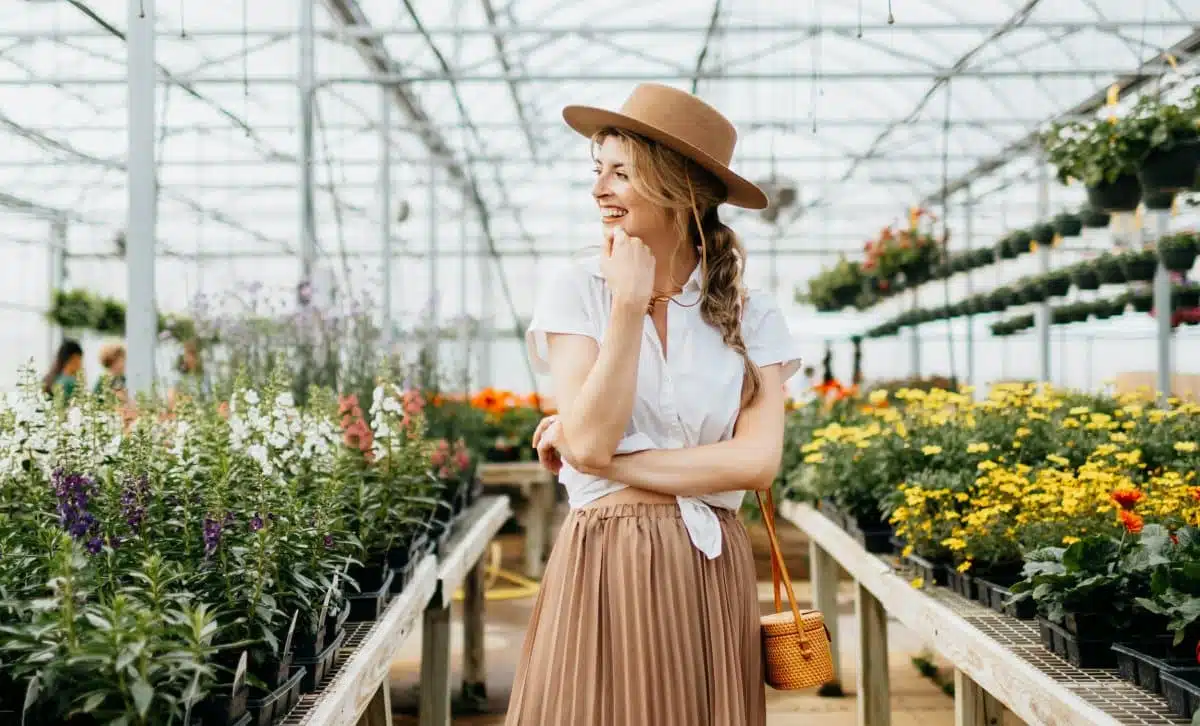Exploring iconic greenhouses offers a unique journey through the world’s most exquisite botanical wonders, where nature’s diversity is showcased under glass domes. These structures, ranging from historical landmarks to modern sights, serve as sanctuaries for rare and exotic plant species and as educational platforms and conservation centers. This guide explores the essence of visiting these botanical paradises, providing an insider’s perspective on what makes each location exceptional. From the architecture of the Victorian era to the innovative designs of the 21st century, each greenhouse presents a distinct environment where flora from across the globe thrives. Whether you’re a botanical enthusiast, a conservation advocate, or simply seeking a serene escape into nature, this guide promises to enrich your understanding and appreciation of these green sanctuaries.
1. Kew Gardens’ Palm House, London, United Kingdom
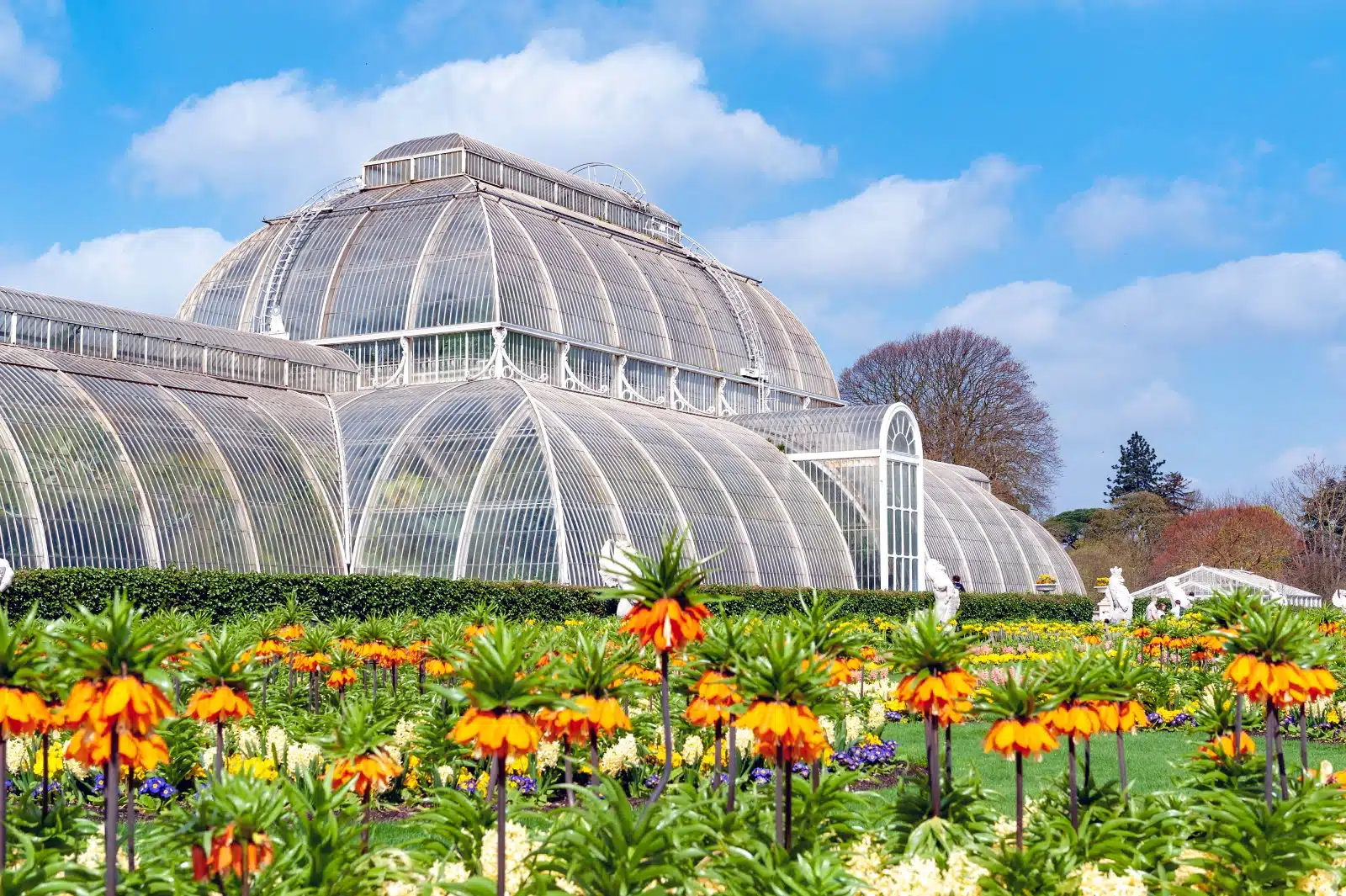
Image Credit: Shutterstock / Gaid Kornsilapa
The Palm House in Kew Gardens is a quintessential representation of Victorian greenhouse architecture, an iron and glass edifice designed to house an extraordinary collection of tropical plants. Built in the 1840s, it is one of the earliest large-scale structural uses of wrought iron. It remains a pivotal study in greenhouse design and functionality. The Palm House’s collection includes a range of species from the world’s tropical regions, meticulously maintained to simulate natural conditions. This greenhouse serves as a refuge for endangered species and as a research center, contributing to the study of botany and the conservation of biodiversity.
Insider’s Tip: For a truly immersive experience, visit during the early morning or late afternoon hours when the light filters through the glass canopy in striking patterns and the crowds are thinner. This timing allows for a more intimate exploration of the plant collections and the architectural details.
When to Travel: Spring and early summer are ideal for visiting, as many plants are in bloom, and the weather in London is generally mild, enhancing the enjoyment of Kew Gardens’ indoor and outdoor attractions.
How to Get There: Kew Gardens is accessible via the London Underground, with the nearest station being Kew Gardens on the District Line. Alternatively, the Kew Bridge station on the National Rail service is a short walk away. Public buses also serve routes that stop near the gardens.
2. The Eden Project, Cornwall, United Kingdom
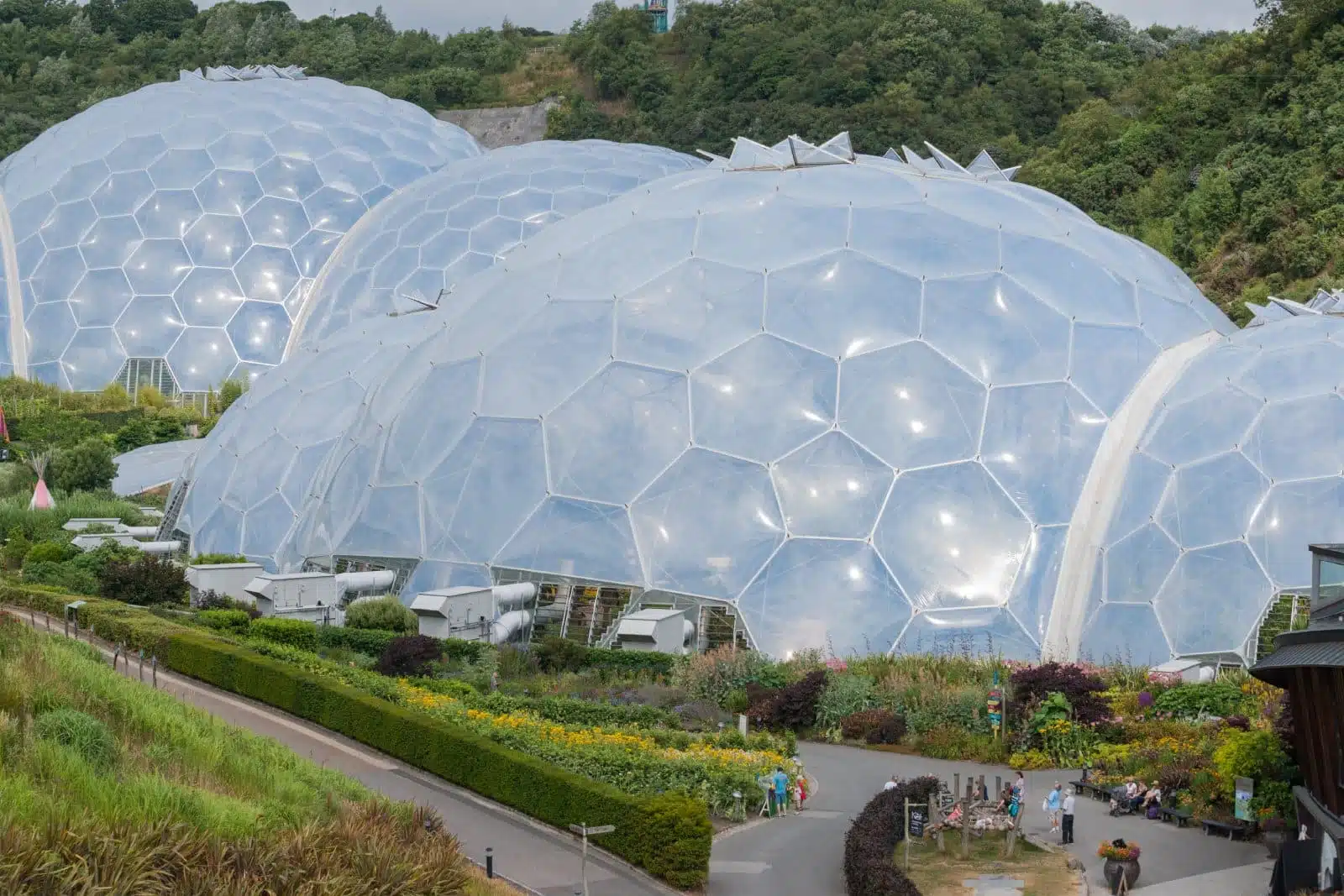
Image Credit: Shutterstock / Photos BrianScantlebury
Nestled in a reclaimed kaolinite pit, The Eden Project is a modern feat of environmental engineering and botanical conservation. Its massive biomes, made of hexagonal ETFE cushions, house thousands of plant species from around the globe, divided into Mediterranean and Tropical environments. Since its opening in 2001, The Eden Project has been a tourist attraction and a hub for environmental education, emphasizing the interconnectedness of humans and the natural world. It showcases innovative sustainability practices, including rainwater harvesting and the use of green energy.
Insider’s Tip: Participate in one of the guided tours to gain deeper insights into the project’s sustainability efforts and the stories behind the plant collections. These tours often reveal hidden gems not immediately apparent to the casual visitor.
When to Travel: The Eden Project offers a year-round destination due to its indoor environment. However, visiting in the shoulder seasons of spring and autumn can be particularly rewarding, with fewer visitors and mild weather for exploring the outdoor gardens.
How to Get There: The Eden Project is near St Austell in Cornwall. It can be reached by train to St Austell station, followed by a bus or taxi ride to the site. Driving is also an option, with ample parking available.
3. Singapore Botanic Gardens’ National Orchid Garden, Singapore
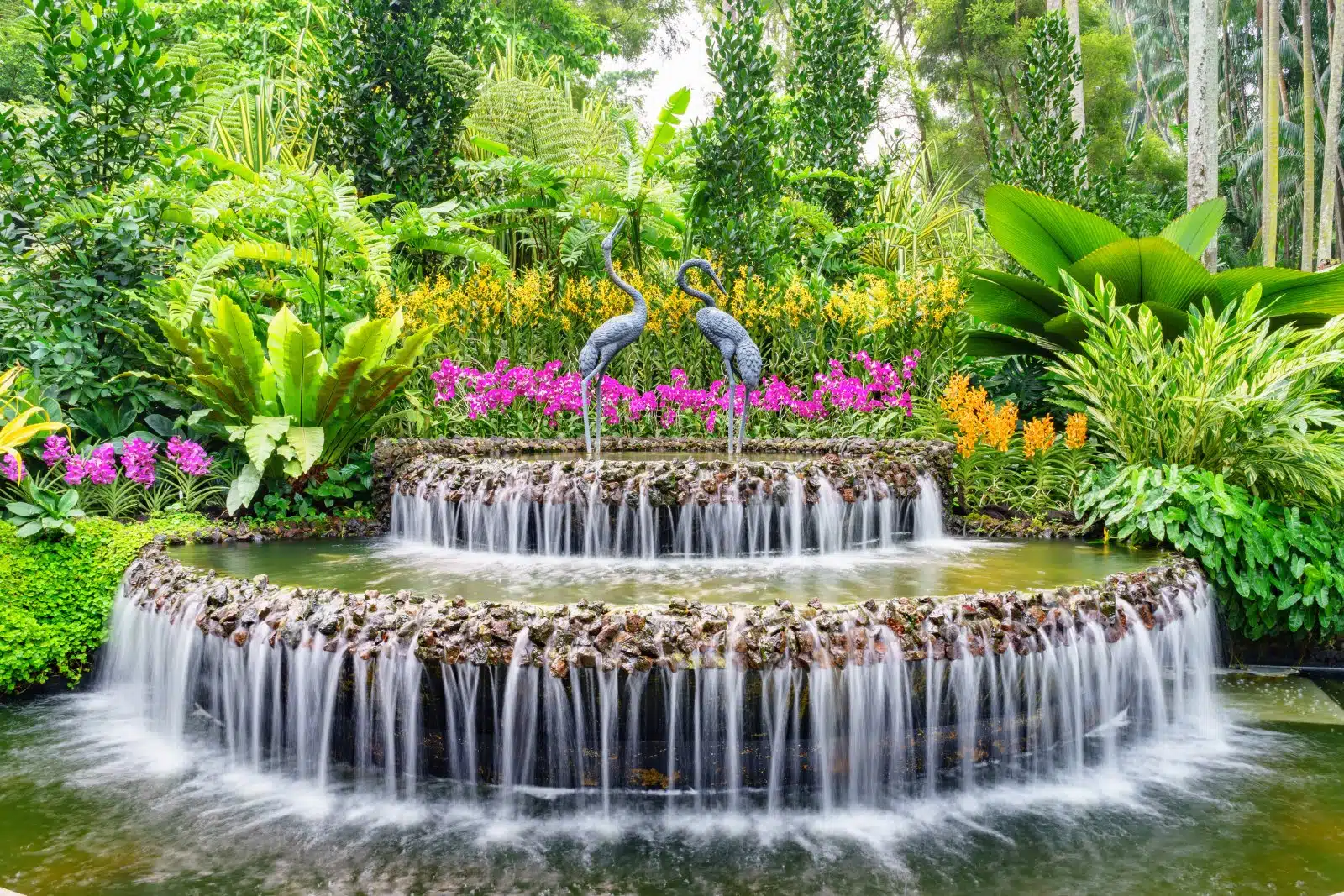
Image Credit: Shutterstock / Pumidol
The National Orchid Garden, within the Singapore Botanic Gardens, epitomizes orchid cultivation and hybridization, showcasing over 1,000 species and 2,000 hybrids. This vibrant mele of colors and fragrances is organized into four zones, each representing a different season to symbolize the cycle of life. The garden’s dedication to preserving and displaying orchids has earned it a reputation as a world leader in orchidology. Beyond its aesthetic appeal, it serves as a center for botanical and horticultural research, contributing significantly to the global understanding of orchids and their conservation.
Insider’s Tip: Don’t miss the VIP Orchid Garden, which features orchids named after visiting dignitaries and celebrities, offering a unique blend of horticulture and history.
When to Travel: Singapore’s equatorial climate means the garden is a year-round destination. However, the cooler months from December to February offer the most comfortable visiting conditions.
How to Get There: The Singapore Botanic Gardens is accessible by public transport, with the nearest MRT station being Botanic Gardens on the Circle and Downtown Lines. Buses also stop along the garden’s perimeter.
4. The Royal Greenhouses of Laeken, Brussels
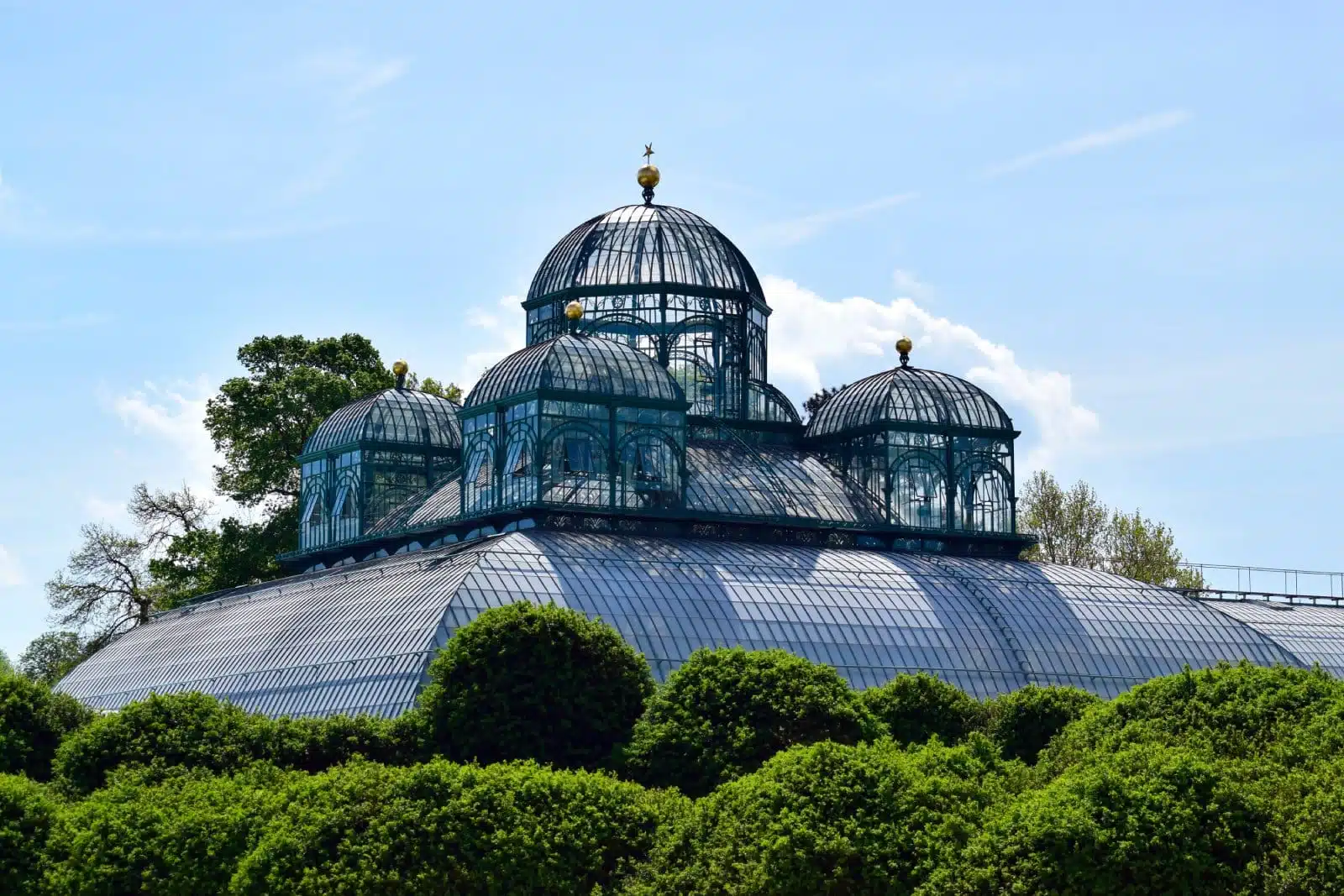
Image Credit: Shutterstock / Mali lucky
The Royal Greenhouses of Laeken are a stunning example of 19th-century greenhouse architecture, commissioned by King Leopold II of Belgium. This vast complex of iron and glass pavilions, domes, and galleries spans over 2.5 hectares, housing a remarkable collection of many centuries-old plants. The greenhouses highlight the Belgian monarchy’s interest in botany and exotic plant collection, featuring species from Africa, the Americas, and the Far East. Open to the public for only a few weeks each spring, they offer a rare glimpse into royal horticultural pursuits.
Insider’s Tip: Plan your visit during the public opening period in the spring to witness the azaleas and rhododendrons in full bloom, a truly spectacular sight.
When to Travel: The greenhouses are only open to the public during a limited period in April and May, coinciding with the blooming season of many plants in the collection.
How to Get There: Located in the northern outskirts of Brussels, the Royal Greenhouses are accessible by bus from the city center. Visitors can take the bus line that stops near the Castle of Laeken, followed by a short walk.
5. The Garfield Park Conservatory, Chicago, USA
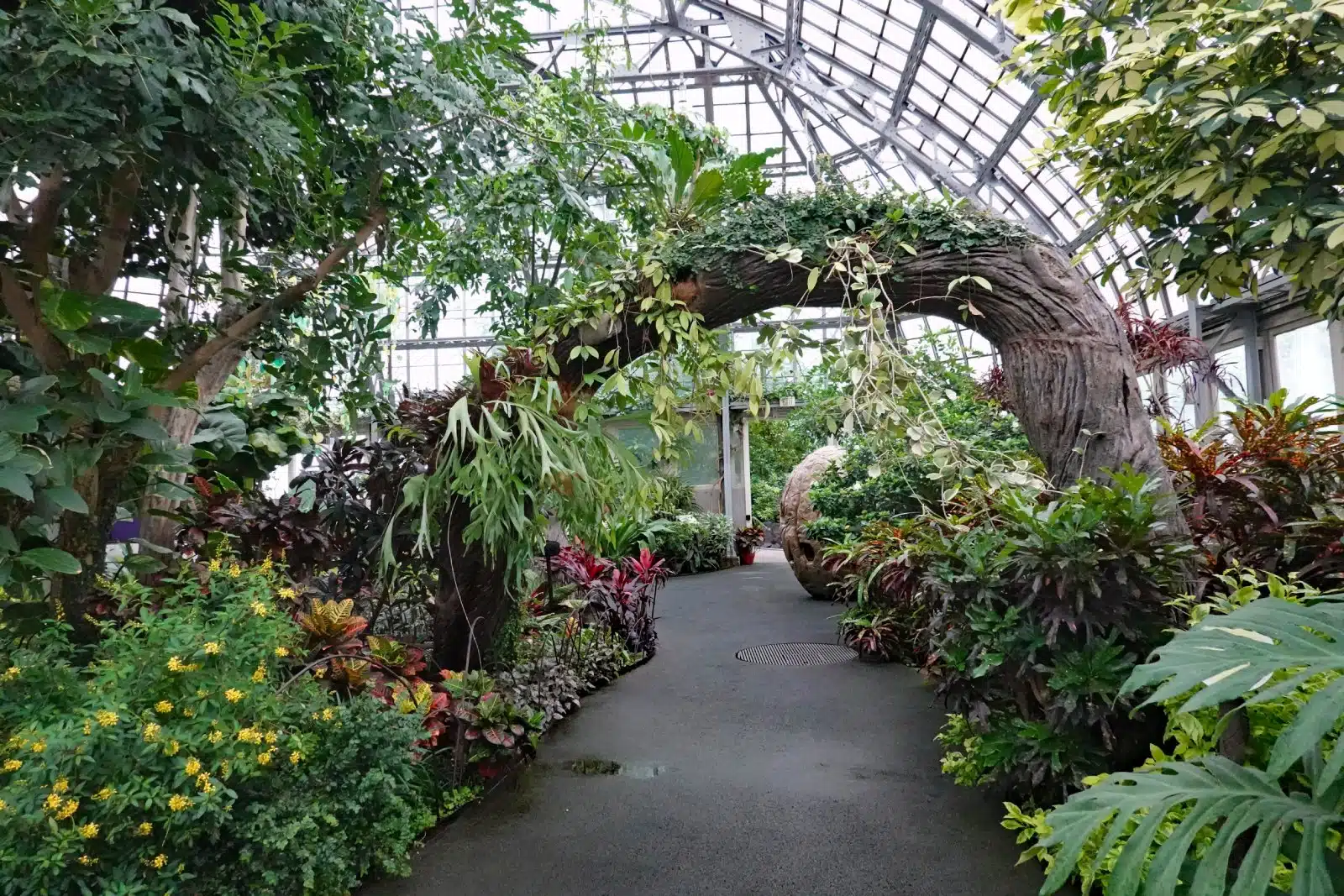
Image Credit: Shutterstock / Thomas Barrat
The Garfield Park Conservatory, one of the largest and most stunning conservatories in the United States, is often referred to as “landscape art under glass.” Spanning over 4.5 acres, it houses thousands of plant species in several distinct environments, including a fern room, a palm house, and a desert house. This urban oasis, designed by landscape architect Jens Jensen in the early 20th century, is a pioneering example of using greenhouse space to create immersive natural landscapes. It is a vital green space in Chicago, offering educational programs, cultural events, and a refuge from the urban environment.
Insider’s Tip: Check the conservatory’s calendar for special events, including flower shows and cultural festivals, which provide unique experiences beyond the regular exhibits.
When to Travel: While the conservatory is a year-round destination, visiting in the winter offers a warm escape from Chicago’s chilly temperatures, with lush, tropical environments inside.
How to Get There: The Garfield Park Conservatory is easily accessible via the Chicago Transit Authority’s Green Line, with the Conservatory-Central Park Drive station nearby. Parking is also available for those driving.
6. The Cloud Forest, Gardens by the Bay, Singapore
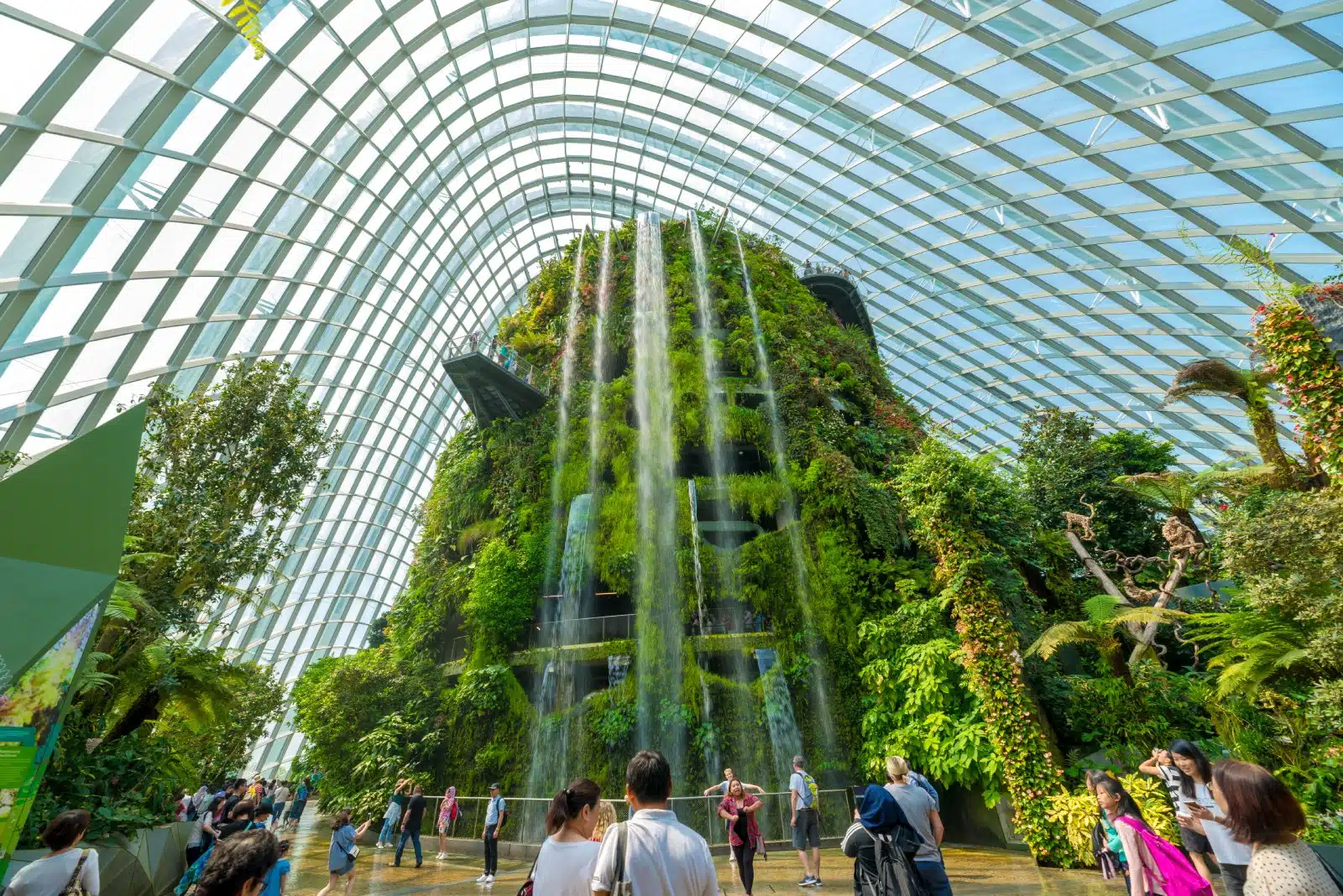
Image Credit: Shutterstock / Supermop
The Cloud Forest in Singapore’s Gardens by the Bay is a feat of modern architectural and engineering brilliance, encapsulating a 35-meter tall mountain covered in lush vegetation and the world’s tallest indoor waterfall. This greenhouse creates a cool, moist conservatory, showcasing plant life from tropical highlands up to 2,000 meters above sea level. The Cloud Forest aims to educate visitors about the importance of tropical forests and the threats they face, such as climate change and deforestation, through its carefully curated plant collections and interactive exhibits.
Insider’s Tip: Make sure to ascend to the Cloud Walk and Treetop Walk for panoramic views of the mountain and the conservatory’s intricate landscapes.
When to Travel: Singapore’s consistent climate means the Cloud Forest is a year-round attraction. However, visiting on a weekday can help avoid the crowds.
How to Get There: Gardens by the Bay is accessible by MRT, with the nearest station being Bayfront on the Circle and Downtown Lines. Several bus routes service the area.
7. The Winter Garden, Auckland, New Zealand
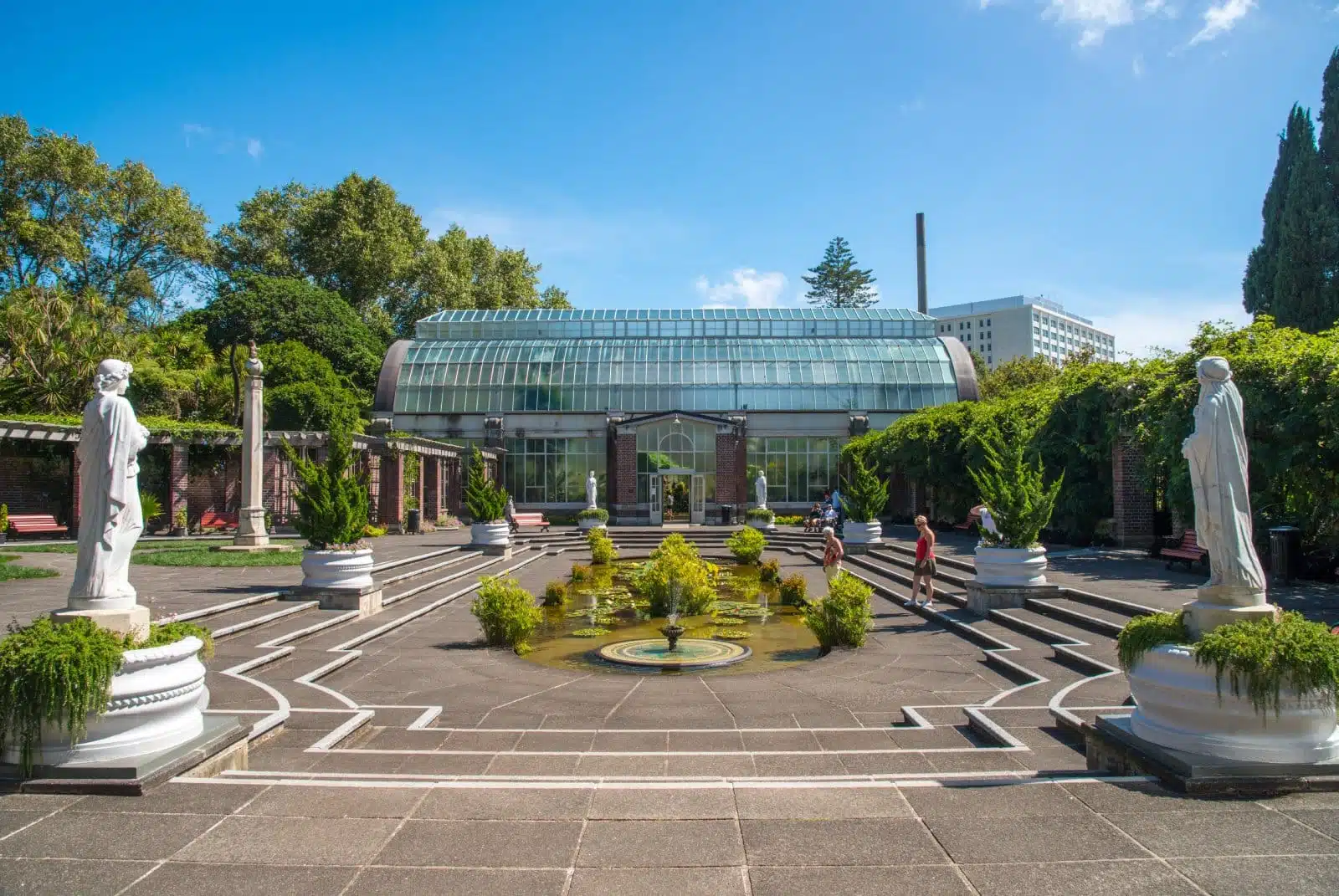
Image Credit: Shutterstock / Boyloso
The Winter Garden at Auckland Domain is a historical feature of New Zealand’s largest city, offering a serene retreat with two Victorian-style glasshouses. One houses a temperate collection, while the other is dedicated to tropical plants, contrasting the two environments. The surrounding courtyard features a sunken pool with water lilies and goldfish, adding to the tranquil atmosphere. The Winter Garden, established in the early 20th century, is a testament to Auckland’s commitment to public green spaces and horticultural excellence.
Insider’s Tip: Visit during the late afternoon to enjoy the soft lighting in the glasshouses and the peaceful ambiance of the courtyard.
When to Travel: Auckland’s mild climate makes the Winter Garden a pleasant visit any time of the year. However, the spring and summer months offer the most vibrant floral displays.
How to Get There: The Winter Garden is located within the Auckland Domain, easily accessible by bus from the city center. There is also free parking available on-site for visitors driving.
8. The Botanical Garden of Curitiba, Brazil
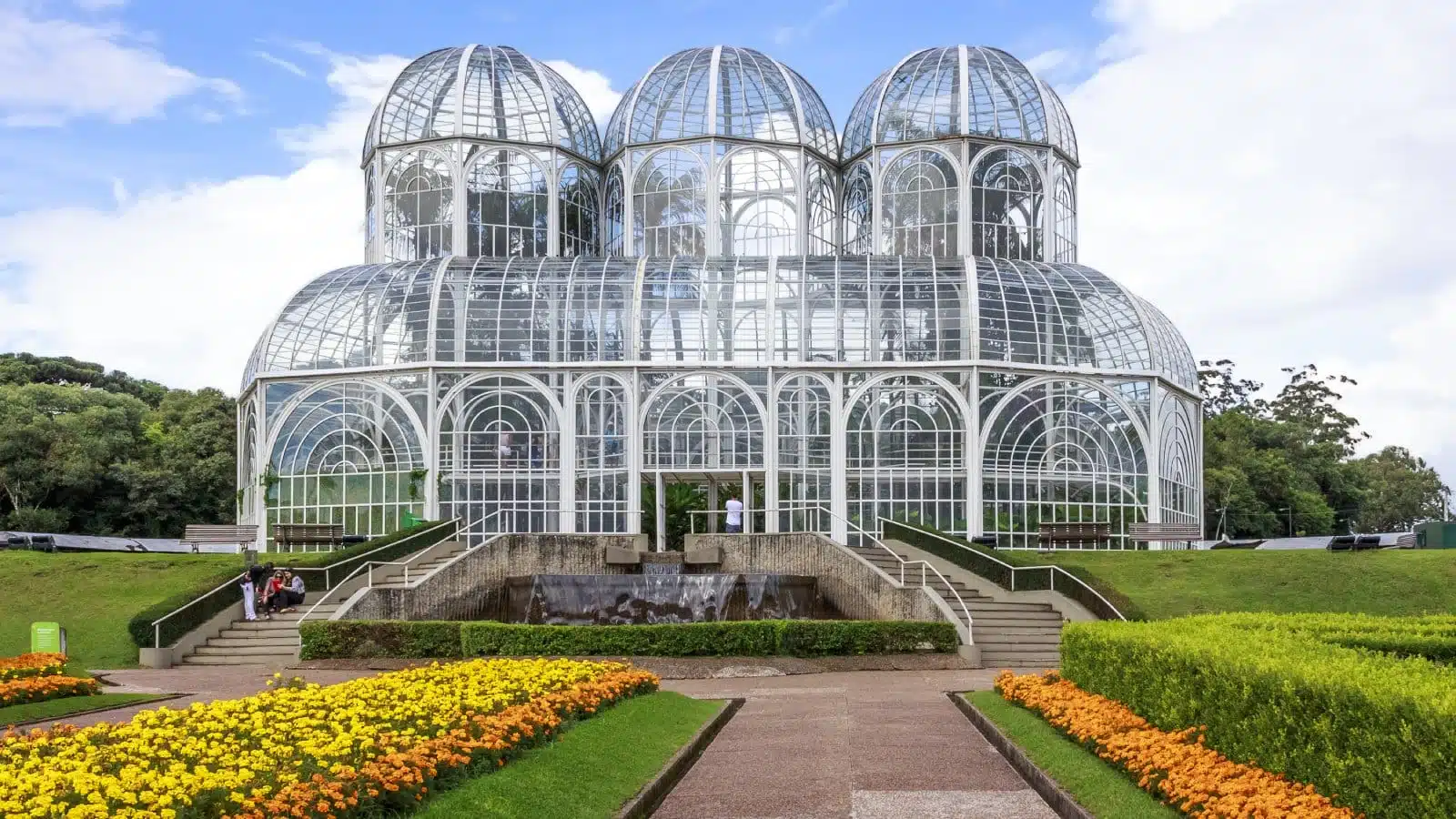
Image Credit: Shutterstock / Marcio Jose Bastos Silva
The Botanical Garden of Curitiba, known for its distinctive Art Nouveau greenhouse, is a symbol of the city and a tribute to the urban planning and green spaces that define Curitiba. The garden features botanical collections that emphasize Brazilian flora, a natural forest and a sensory garden for the visually impaired. Inspired by the Crystal Palace in London, the greenhouse is a research and conservation facility that offers visitors stunning views of the gardens and the city skyline.
Insider’s Tip: Explore the surrounding gardens, especially the French-style formal garden in front of the greenhouse, for a complete experience of the botanical diversity and design philosophy.
When to Travel: Curitiba’s temperate climate makes it an enjoyable destination year-round, but the spring (September to November) brings a special vibrancy to the garden, with many plants in bloom.
How to Get There: The Botanical Garden is in the city center, easily accessible by public transportation or car. There are bus lines that stop directly in front of the garden.
9. The Montreal Botanical Garden, Canada
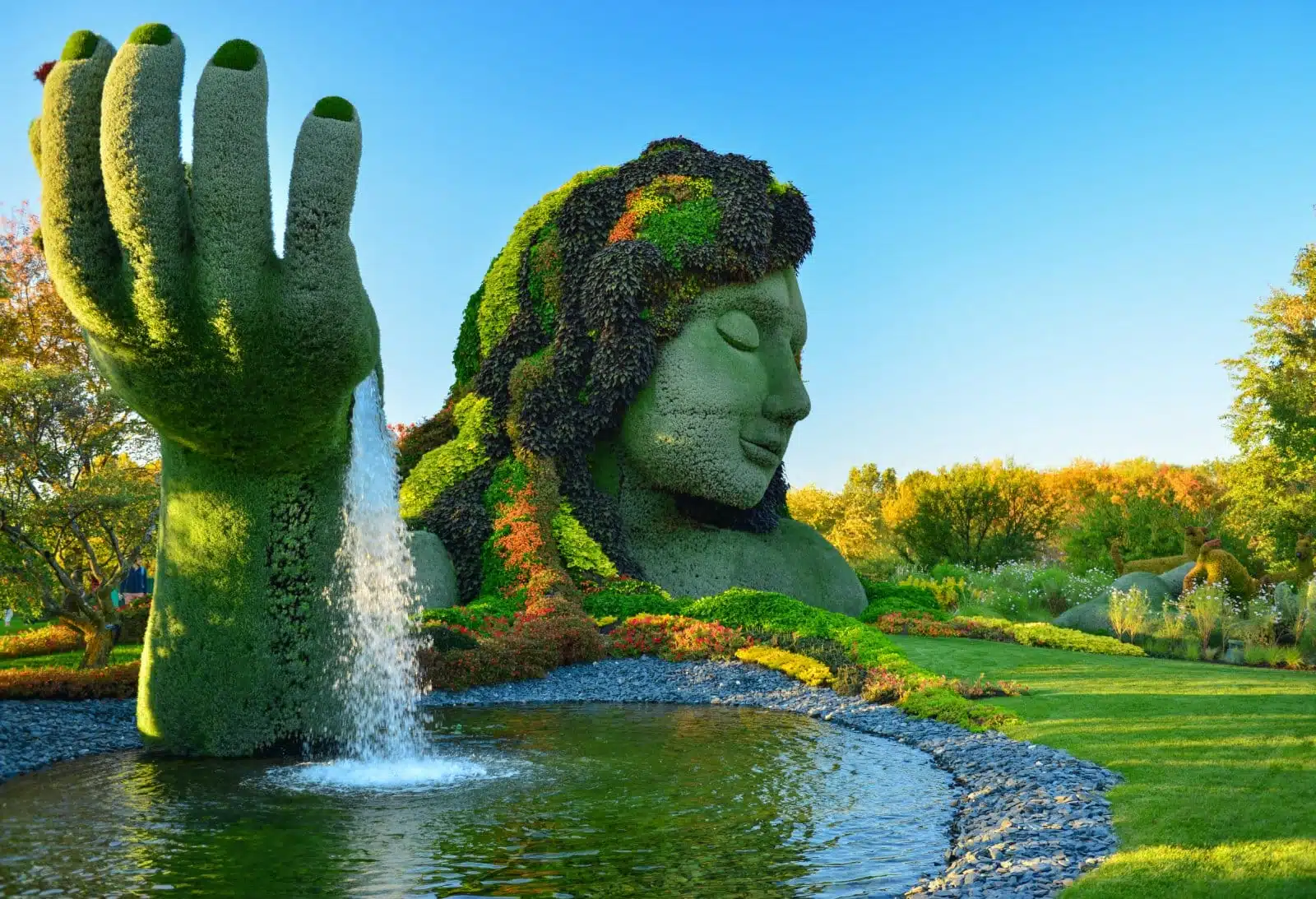
Image Credit: Shutterstock / Richard Cavalleri
The Montreal Botanical Garden is one of the world’s greatest botanical gardens, offering diverse ecosystems and thematic gardens spread over 75 hectares. Its ten greenhouses range from the lush Tropical Rainforest to the arid Desert Pavilion, each curated to represent different global biomes. The garden’s commitment to education, conservation, and research is evident through its extensive plant collections and innovative exhibitions, making it a leader in botanical sciences.
Insider’s Tip: Don’t miss the Chinese and Japanese Gardens. These outdoor spaces complement the indoor greenhouse experiences with their meticulous design and serene beauty.
When to Travel: Late spring through early fall (May to October) is the best time to visit, when the outdoor gardens are in full bloom, and the weather is most favorable for exploring.
How to Get There: The Montreal Botanical Garden is located near the Pie-IX metro station on the Green Line. It’s also accessible by bus, with several lines stopping nearby.
10. The Schönbrunn Palace Orangery, Vienna, Austria
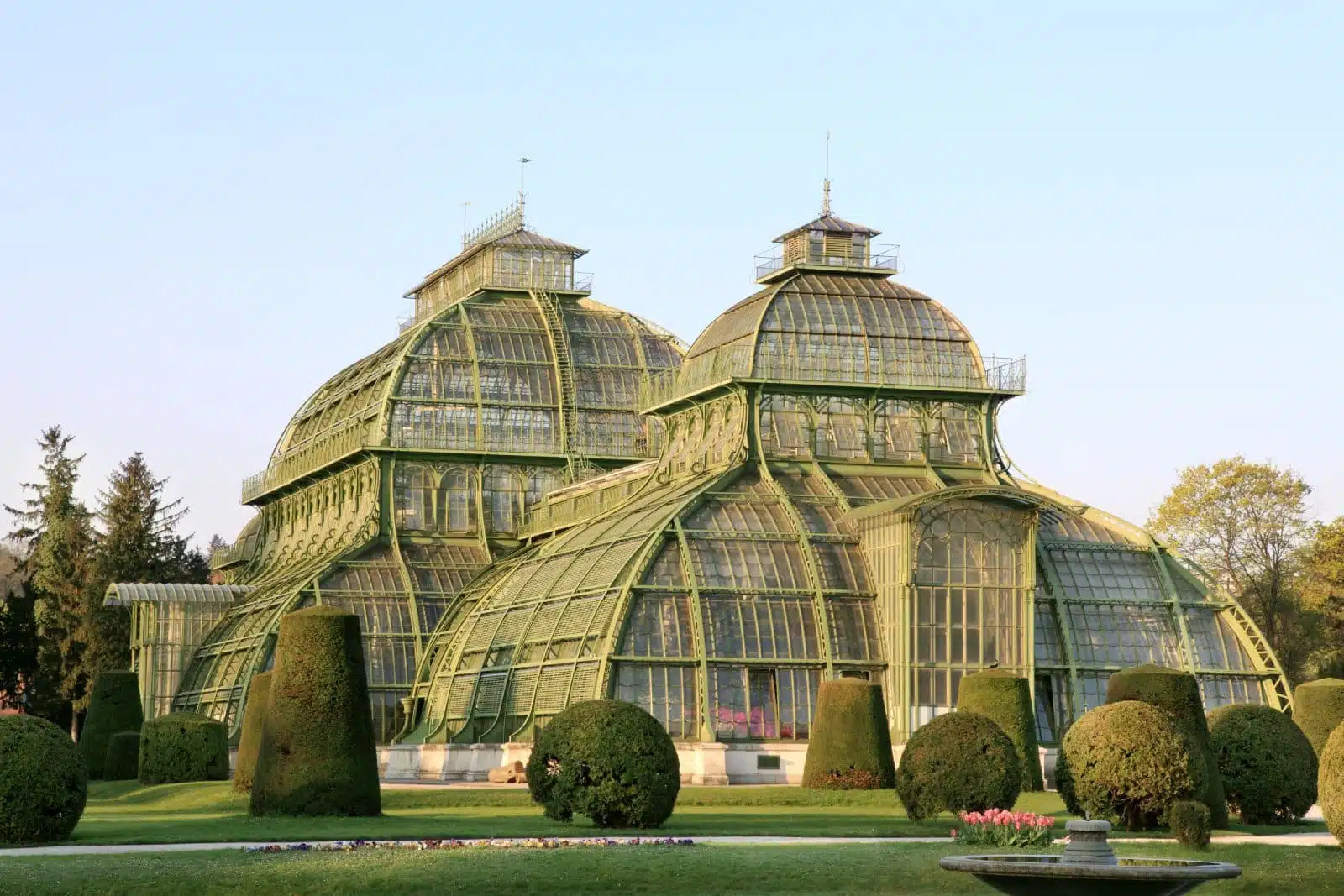
Image Credit: Shutterstock / Elena Schweitzer
The Schönbrunn Palace Orangery, one of the last Baroque orangeries in the world, is a historic greenhouse that once played a crucial role in cultivating exotic fruits and plants for the Habsburg monarchy. Today, it serves as a venue for cultural events. It houses a collection of Mediterranean plants, continuing its legacy of botanical cultivation. The Orangery highlights the opulence and scientific curiosity of the imperial court, offering visitors a glimpse into the past while enjoying the beauty of its plants and architecture.
Insider’s Tip: Attend one of the classical concerts held in the Orangery for an unforgettable experience that combines Viennese culture with the historic ambiance of the greenhouse.
When to Travel: The Orangery is enchanting year-round, but visiting in the spring or summer allows you to also enjoy the extensive gardens of Schönbrunn Palace in full bloom.
How to Get There: The Schönbrunn Palace Orangery is easily accessible by public transport, with the Schönbrunn metro station (U4 line) nearby. Buses also stop close to the palace grounds.
The Bottom Line

Image Credit: Shutterstock / Halfpoint
Visiting iconic greenhouses provides a sanctuary where the beauty and complexity of plant life can be appreciated up close. These greenhouses, each with unique collections and stories, serve as vital centers for conservation, education, and research, bridging the gap between humanity and the natural world. As you plan your visits, remember that they are living museums dedicated to preserving our planet’s botanical heritage. Whether you enjoy experiencing the architectural wonder of the Victorian era or the innovative designs of modern structures, your journey through these botanical wonders promises to be enlightening and inspiring.
More From The Green Voyage
Top 10 Trending Travel Destinations 2024
6 Essential Banking Apps for International Travel – Managing Your Finances on the Go
Traveling With Kids – 10 Tips to Create Memorable Family Holidays
The post The Ultimate Guide to Visiting 10 Iconic Botanical Greenhouses 2024 first appeared on The Green Voyage.
Featured Image Credit: Pexels / Leah Newhouse.
For transparency, this content was partly developed with AI assistance and carefully curated by an experienced editor to be informative and ensure accuracy.
Tips for Trip Success
Book Your Flight
Find an inexpensive flight by using Kayak, a favorite of ours because it regularly returns less expensive flight options from a variety of airlines.
Book Your Hotel or Special Accommodation
We are big fans of Booking.com. We like their review system and photos. If we want to see more reviews and additional booking options, we go to Expedia.
You Need Travel Insurance!
Good travel insurance means having total peace of mind. Travel insurance protects you when your medical insurance often will not and better than what you get from your credit card. It will provide comprehensive coverage should you need medical treatment or return to the United States, compensation for trip interruption, baggage loss, and other situations.Find the Perfect Insurance Plan for Your Trip
